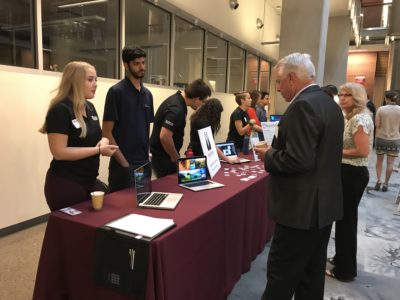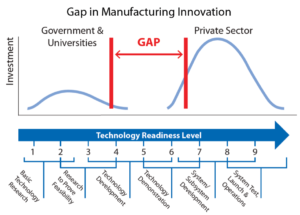

ASU’s Ira A. Fulton Schools of Engineering
Published: 04/27/2017
Updated: 03/07/2022
ASU’s Ira A. Fulton Schools of Engineering
The talent pipeline coming out of higher learning institutions in Arizona rivals other major metros across the United States. Arizona State University (ASU) for example, is preparing nearly 90,000 students a year for future workforce, Maricopa Community Colleges is training more than 250,000 students, and a variety of trade and technical programs are adding to the pipeline.
At ASU’s Fulton Schools of Engineering, more than 20,000 students are enrolled in programs ranging from health systems engineering to computer and energy engineering. Here are some other fast facts about the Fulton Schools:
- 6 distinct schools
- School of Biological and Health Systems Engineering
- School of Computing, Informatics & Decision Systems Engineering
- School of Electrical, Computer and Energy Engineering
- School of Engineering of Matter, Transport & Energy
- School of Sustainable Engineering and the Built Environment
- The Polytechnic School
- 25 undergraduate programs
- 39 graduate programs
- 20,000 students currently enrolled
- 3,500 degrees awarded in 2016
In 2016 and 2017, ASU was ranked number one in innovation by U.S. News & World Report. Additionally, it was recently announced that ASU advanced to No. 21 in the new Milken Institute tech transfer rankings — achieving ratings higher than Harvard, USC, Duke and Johns Hopkins.
“As a public university, we are obligated to serve the community we’re in,” said Kyle Squires, Dean of ASU’s Ira A. Fulton Schools of Engineering. ASU is the largest public university in the country.
The Fulton Schools team up with business and community throughout Greater Phoenix and across the state to provide a value-add for companies looking for a talented and qualified workforce to fill their evolving needs. Additionally, the Schools’ ability to conduct research in their state-of-the-art facilities would not be possible without the backing of major corporations.
The Fulton Schools, which received $98.3 million in research awards last year, currently have more than 1,000 students conducting research. In fact, from 2012 to 2016, the Fulton Schools recorded nearly 700 invention disclosures.
“There is a widening gap between discovery and end-use applications,” said Squires. The Fulton Schools aim to close that gap by partnering with industry leaders to conduct research and introduce innovative programs that give students real-world experience with real outcomes in creating, testing, destroying, and creating again.
Earlier this year, ASU established the Manufacturing Research and Innovation Hub in the Fulton Polytechnic School, in partnership with Honeywell Aerospace, Concept Laser Inc., PADT and others. The 15,000-square-foot, $2 million facility is the largest manufacturing research facility in the Southwest, allowing ASU students and industry partners to stay on the forefront of Industry 4.0 testing and research.
Additionally, the ASU Center for Cybersecurity and Digital Forensics recently teamed up with Samsung Electronics and Allstate to address digital security challenges by advancing cybersecurity research, education and entrepreneurship.
The community and business partnerships with Fulton Schools are incredibly robust and continuing to increase. This is partly due to the current gap that exists between the education system and the private sector. The Fulton Schools want to be increasingly known for their ability to address challenges the private sector is experiencing. By bridging the gap and being utilized as a resource, there is the potential to increase speed to market and provide useful technology to the public.
